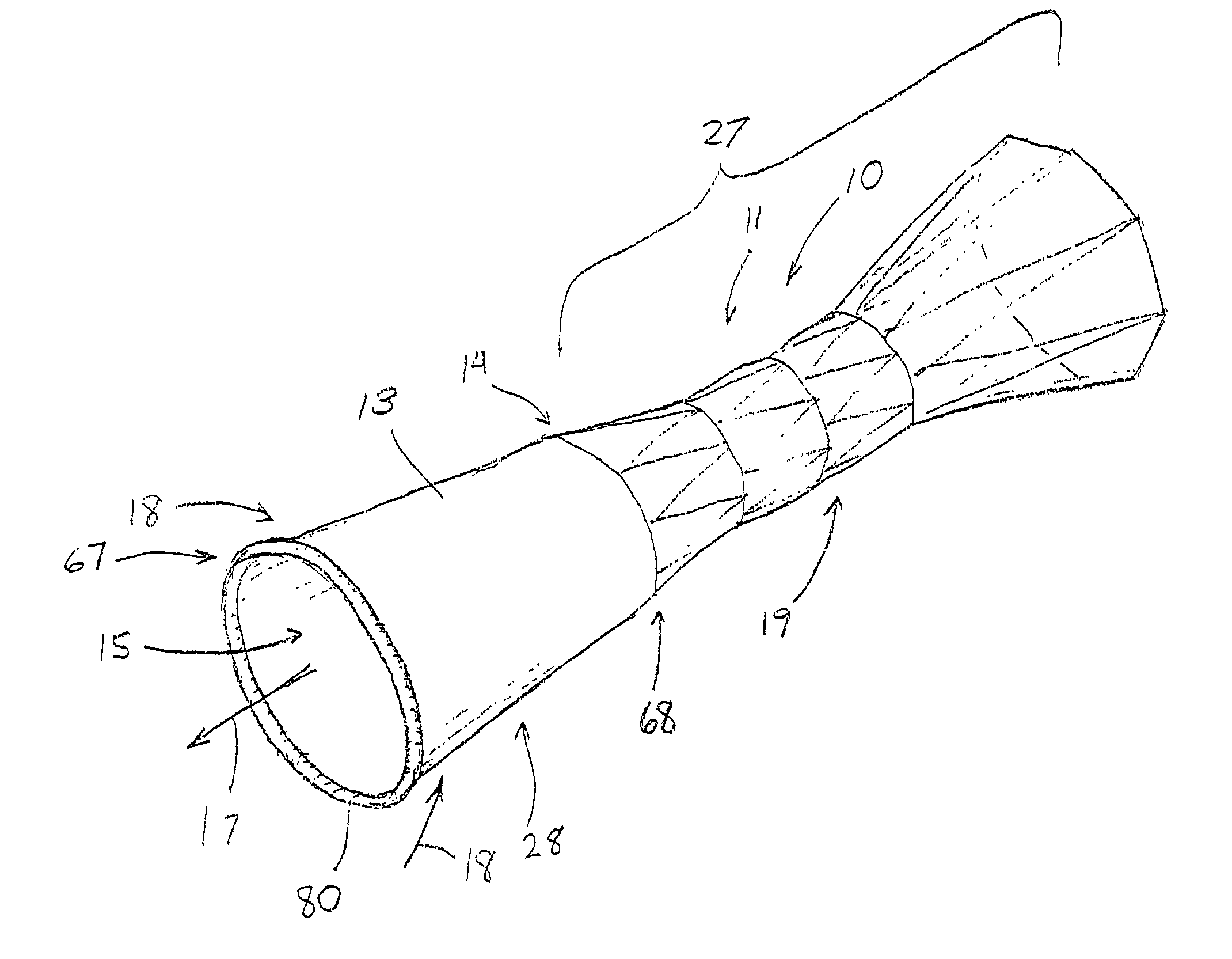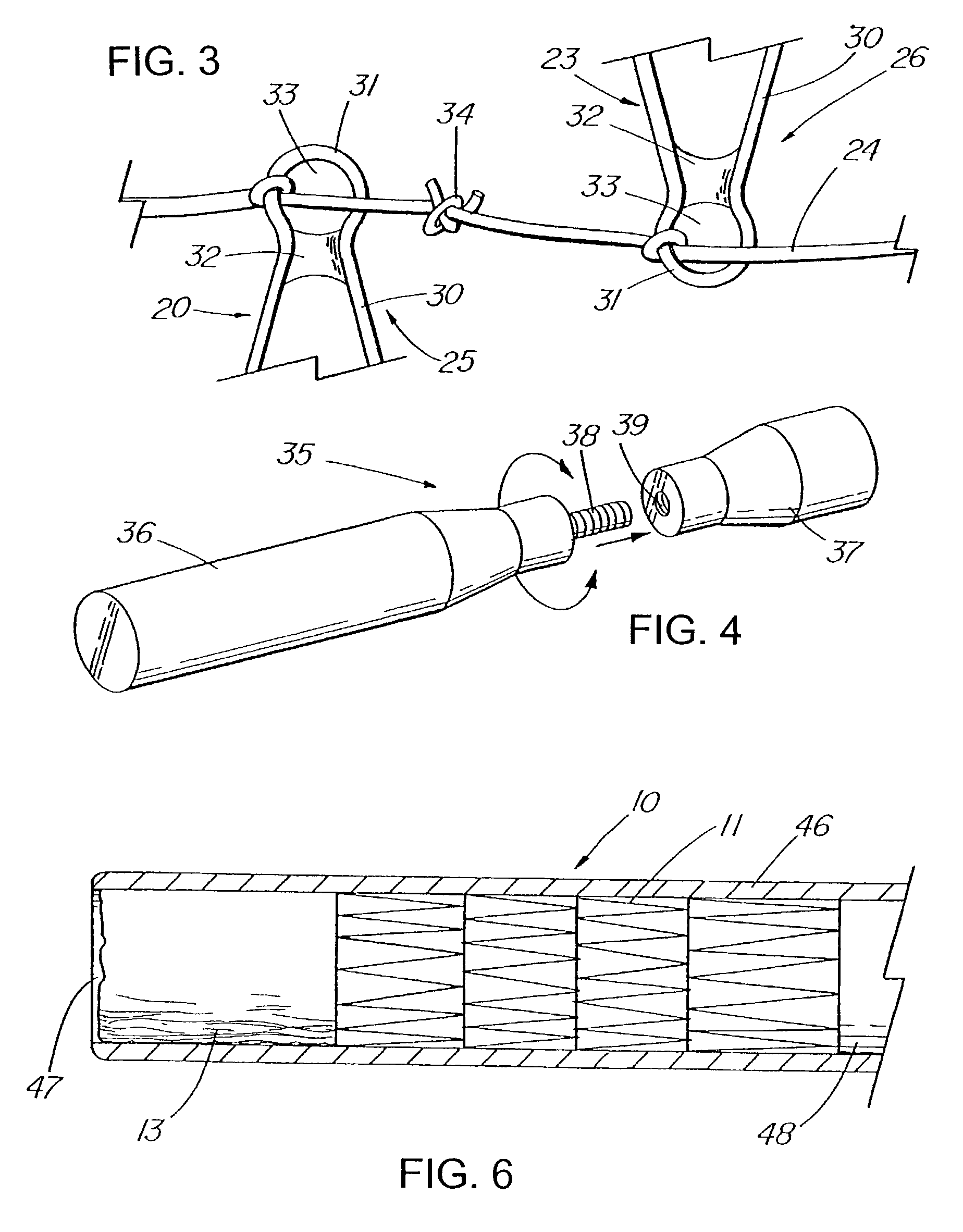Prosthesis having a sleeve valve
a prosthesis and valve technology, applied in the field of medical devices, can solve the problems of fluid from the stomach flowing into the mouth of the patient, the device is not fda approved, and the esophagus is blocked or partially stenosized, so as to prevent reflux, prevent antegrade, and maintain the patency of the lower esophagus and sphincter.
- Summary
- Abstract
- Description
- Claims
- Application Information
AI Technical Summary
Benefits of technology
Problems solved by technology
Method used
Image
Examples
Embodiment Construction
[0029]FIGS. 1–14 depict exemplary prostheses of the present invention comprising a tubular member 11 with a passage 12 therethrough, and a thin, flexible sleeve 13 extending from the tubular member 11. The sleeve 13, which also has a passage 15 therethrough, is configured to allow the flow of liquid or other materials moving under a first pressure until the flow and pressure are lessened to where they are exceeded by a second, back pressure of the drainage environment, at which time the sleeve 13 collapses to prevent the ingress of fluids of materials into the tubular member.
[0030]FIG. 1 depicts a pictorial view of an illustrative, preferred embodiment of pressure sensitive anti-reflux esophageal prosthesis 10 of the present invention. The prosthesis includes a tubular frame 11 of a plurality 19 of self-expanding, zig-zag wire stents 20, 21, and 23 covered by a polyurethane sleeve 13 that is disposed around and extends along the entire length 27 of the tubular frame. The sleeve also...
PUM
 Login to View More
Login to View More Abstract
Description
Claims
Application Information
 Login to View More
Login to View More - R&D
- Intellectual Property
- Life Sciences
- Materials
- Tech Scout
- Unparalleled Data Quality
- Higher Quality Content
- 60% Fewer Hallucinations
Browse by: Latest US Patents, China's latest patents, Technical Efficacy Thesaurus, Application Domain, Technology Topic, Popular Technical Reports.
© 2025 PatSnap. All rights reserved.Legal|Privacy policy|Modern Slavery Act Transparency Statement|Sitemap|About US| Contact US: help@patsnap.com



